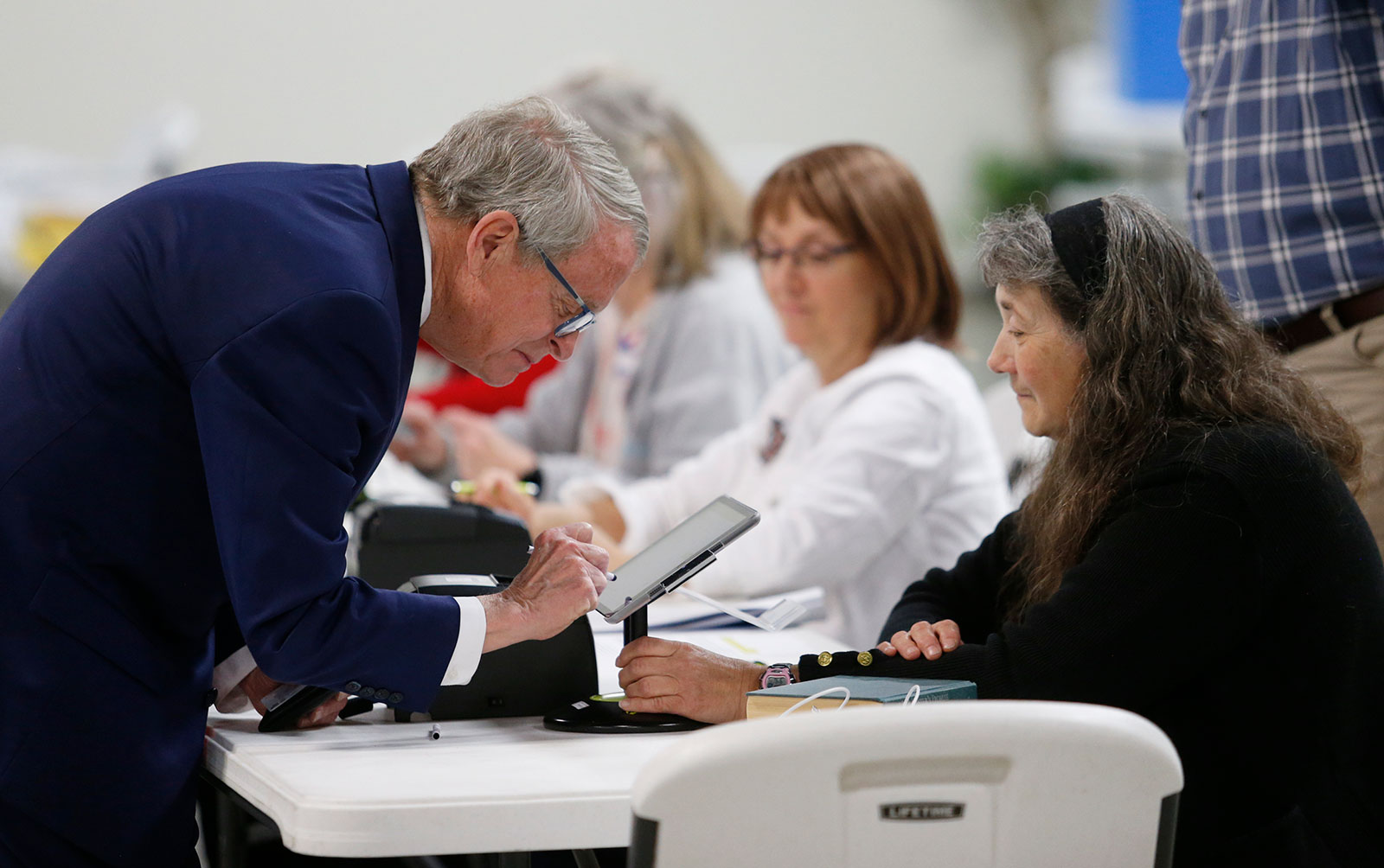Voting in Ohio and Indiana Tuesday kicks off a busy primary month that will set up some of the key races for this year’s midterms.
In both states, voters will pick their nominees in newly redrawn congressional districts. In the Cleveland area, that means a Democratic rematch that could offer a window into the strength of the party’s progressive wing more than a year into Joe Biden’s presidency.
Here are five things to watch Tuesday:
The wide-Senate primary: The seven-candidate GOP race to replace retiring Republican Sen. Rob Portman features a huge swath of undecided primary voters choosing from a series of options: the candidate former President Trump endorsed; one of several who tried to emulate him; or the one who represents a break from Trumpism.
Polls show that Trump-backed J.D. Vance, the “Hillbilly Elegy” author and venture capitalist, and Josh Mandel, the former state treasurer who has embraced Trump’s cultural battles and campaigned with Texas Sen. Ted Cruz, are at the front of the field.
There are some indications, though, that state Sen. Matt Dolan is a late riser. Dolan, whose family owns Major League Baseball’s Cleveland Guardians, is the only candidate who has not parroted Trump’s lies about election fraud. Dolan saw his stock rise in a Fox News poll out last week, drawing 11% support compared to 7% in March.
The other Republican Senate candidates, self-funding businessman Mike Gibbons and former state GOP chairwoman Jane Timken, Portman’s preferred candidate, have faded in polls in the race’s final stretch.
Test of Trump’s influence: Mandel’s campaign signs say he is “pro-God, pro-guns, pro-Trump.” Gibbons offered himself as a businessman, not a politician, in the Trump mold. Timken touted Trump’s role in elevating her to become state GOP chairwoman in 2017.
But the former President eschewed all of them and endorsed Vance, who in 2016 was a vocal opponent of Trump but has since recanted that criticism. Trump’s decision infuriated many Ohio Republicans and confused some GOP voters, who were being bombarded at once by pro-Vance ads touting Trump’s support and anti-Vance ads that showed him saying he might vote for Hillary Clinton in 2016 and that some Trump supporters “voted for (Trump) for racist reasons.”
Tim Ryan looks for room in Ohio: Rep. Tim Ryan’s Democratic Senate primary against attorney Morgan Harper is largely a forgone conclusion. How Ryan positions himself in the general election — and what his run will say about the future of Democrats in the state — will be anything but inevitable.
Ryan is looking to do something that has eluded all Democrats not named Sen. Sherrod Brown for years: Win a statewide race in Ohio. No Democrat other than Brown has won nonjudicial statewide office in Ohio since 2008, and President Barack Obama was the last Democratic presidential nominee to win Ohio in 2012. Ryan is also trying to accomplish this feat at a particularly difficult time for Democrats as the party faces historical and economic headwinds.
Battle for the soul of the Democratic Party — again: For the second time in less than a year, Democrats Shontel Brown, now a House member, and Nina Turner are facing off in a tight race to be their party’s nominee in Ohio’s 11th Congressional District.
Though Brown is now the incumbent, progressives are again waging a fiery campaign to claim the heavily Democratic seat — as they seek to assure that, come what may in November, the House Democrats are a more progressive group in the next Congress. Turner has the backing of leading progressives from around the country and, like last year, the editorial board of The Plain Dealer in Cleveland.
On Brown’s side are President Joe Biden, who endorsed her in late April, along with a handful of top Democratic officials and moderate-friendly outside groups like the Democratic Majority for Israel’s super PAC, which says it spent more than $1.1 million on her campaign.

The Republican primary clash that wasn’t: There was a time when incumbent Gov. Mike DeWine appeared vulnerable to a challenge from Trump-aligned candidates running to his right.
Not anymore.
DeWine, who has spent decades in federal and statewide office, is a conservative establishment titan in Ohio, but even as the state has moved right, DeWine — both temperamentally and politically — has remained in the middle of the GOP.
Victory for DeWine in an Ohio campaign season dominated by the GOP’s wild Senate primary would also underscore the unique difficulties facing right wing candidates either aligned or backed by Trump in statewide elections, where a degree of moderation appears to hold more appeal than in federal races.
Read more here.